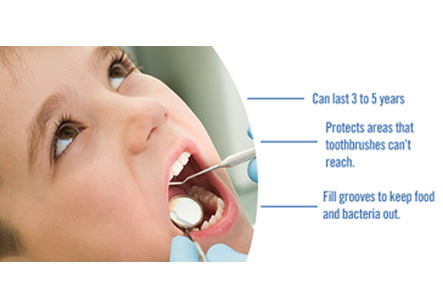Pulpotomy
Introduction
The surgical removal of the entire coronal pulp, leaving intact the vital radicular pulp within the canals is pulpotomy.
In pulpotomy, the inflamed pulp chamber on a baby molar is removed. The area is sterilized, and the chamber is sealed. It is sometimes called a baby tooth root canal. Actually, it is not really a root canal and it can be done is some cases in permanent teeth.
It happens to be a very common procedure in children and shows a fairly good success rate. It is quite easy to do in conjunction with associated procedures.
The pulp tissue becomes irritated and inflamed when a cavity gets really deep, close to the pulp of a tooth or even into the pulp. This causes tooth ache. If the inflammation and infection continues without treatment, the tooth will likely eventually abscess.
Pulpotomies have reasonably good prognosis. It may buy some time, but cannot save an already abscessed tooth.
Although a very reliable procedure, rarely, a tooth with a pulpotomy will have complications and need to be extracted. This is usually due to the remaining pulp tissue in the root canals giving some sort of trouble.
Treatment Objectives for the Pulptomy
• To preserve the vitality of the radicular pulp
• To neutralize any residual infectious process
• To amputate the infected coronal pulp
Iran offers a superior Dental treatments that is world best quality. For patients from the USA, and Europe for example, the savings can be 60% or more

Indications for the Pulpotomy
• In case of inflamed coronal portion of the pulp
• In case of cariously exposed primary teeth when their retention is more advantageous than extraction.
Contraindications for the Pulpotomy
• mobility
• spontaneous pain, especially at night
• marked tenderness to percussion
• fistula or swelling
• necrotic pulp
• absent hemorrhage; profuse hemorrhage
• radiolucency exists in the furcal or periradicular areas
• the tooth crown is nonrestorable
• dystrophic calcification (pulp stones)
Procedure- in brief
• In baby molars, a pulpotomy is used in the process of trying to save and restore the tooth.
• The decay is removed, and then the pulp chamber is removed usually with a high-speed bur or spoon excavator.
• A small cotton ball damp with formocresol is placed to mummify the pulp stumps and to sterilize the area.
• The cotton ball is removed after a couple of minutes and the opening is sealed usually with a Zinc Oxide and Eugenol material like IRM which is a putty like material that hardens up after a few minutes.
• After a pulpotomy on a baby molar, it is usually necessary to place a stainless steel crown to restore the tooth.
• The most common method to treat pulpotomized teeth is formocresol. Other methods include Ferric Oxide, MTA, electrosurgery and even lasers.
Technique for Pulptomy of the Primary Teeth
• Profound anesthesia for tooth and tissue is applied
• The tooth to be treated is isolated with a rubber dam
• Endo access opening is performed
• All caries are excavated
• The dentin roof of the pulp chamber is removed
• The coronal pulp tissue is removed
• Hemostasis is maintained with dry cotton pellets under pressure.
• Diluted formocresol is applied to pulp on cotton pellet for 3- 5 minutes.
• A glass ionomer, ZOE, IRM, or MTA is placed in contact with pulp stumps.
• A stainless steel crown is placed later.
Treatment Approaches for the Pulpotomy of Primary Teeth
• Preservation: ferric sulfate maintains the vitality and normal histologic appearance of the entire radicular pulp.
• Regeneration: transforming growth factor (TGF) in the form of bone morphogenetic proteins, freeze-dried bone, and MTA.
• Devitalization: uses a 1:5 diluted formocresol (Buckley’s) technique, which results in partial devitalization with persistent chronic inflammation. Empirical success.